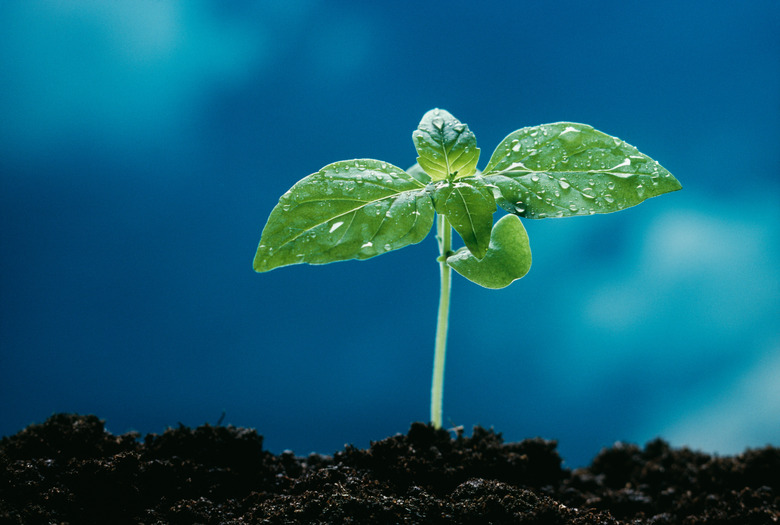LED Lights For Plant Growth
Light emtting diode (LED) lights are often used to encourage plant growth. Plants utilize different wavelengths of light to promote vegetative growth and flowering. LED lights are very efficient and capable of producing the type of light needed by plants.
Vegetative Growth
Vegetative Growth
According to the Oregon State University Extension Service, most plants utilize light in the "blue" part of the visible light spectrum to promote vegetative growth. Light with wavelengths between 430 and 460 nanometers has a bluish appearance.
Flowering
Flowering
The University Extension Service also claims that plants utilize light in the "red" part of the visible light spectrum to promote flowering and budding. Light with wavelengths between 650 and 700 nanometers has a reddish appearance.
LED
LED
Manufacturers of LEDs offer different colors of light. Consumers can purchase LEDs that emit the type of red light and the type of blue that plants utilize for flowering.
Lumens
Lumens
Lumens are a measurement used to gauge the light intensity of a light source. According to Tool Based Services, LEDs produce a generous 20 lumens per watt of power drawn. The sun is a very productive light source for encouraging plant growth because the sun emits extremely intense white light. White light emits every color of light in the visible spectrum including blue and red.
Facts
Facts
Not only are LEDs great for encouraging plant growth, they are very energy-efficient. EarthEasy.com claims that LEDs are a type of "energy-efficient lighting." Unlike most types of light bulbs, LEDs require very little power to produce light.
Cite This Article
MLA
Leone, Jay. "LED Lights For Plant Growth" sciencing.com, https://www.sciencing.com/led-lights-plant-growth-5958172/. 24 April 2017.
APA
Leone, Jay. (2017, April 24). LED Lights For Plant Growth. sciencing.com. Retrieved from https://www.sciencing.com/led-lights-plant-growth-5958172/
Chicago
Leone, Jay. LED Lights For Plant Growth last modified March 24, 2022. https://www.sciencing.com/led-lights-plant-growth-5958172/
